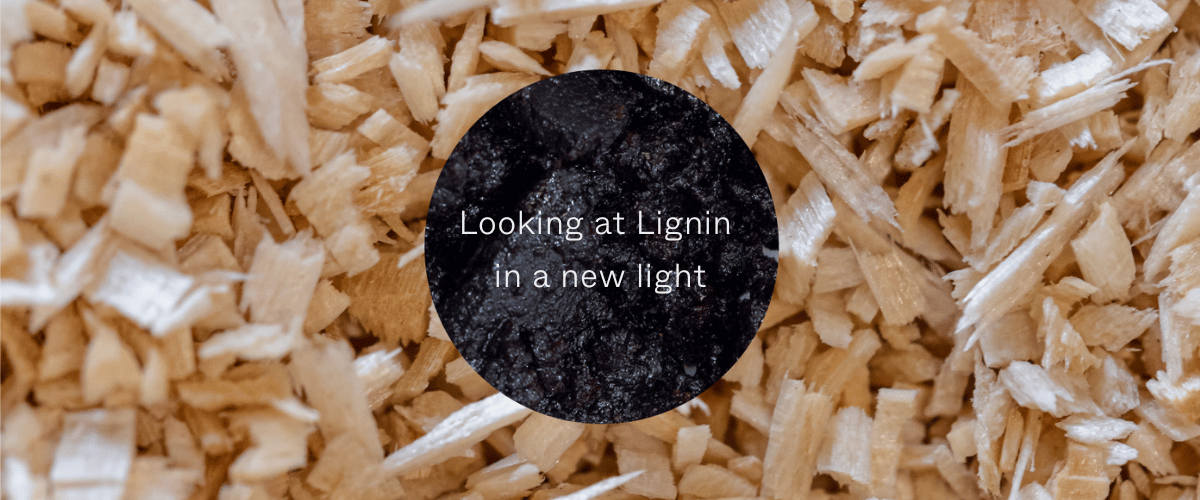Looking at lignin in a new light
It’s well known in the biorefinery community that lignin is an untapped renewable resource of useful chemical building blocks, but creating value out of this incredibly long polymer has, until now, been a chemist’s nightmare. Wouldn’t it be great if there was a more manageable lignin preparation to start with? Read on to learn about the low molecular weight option that Sonichem’s ultrasonics can conjure up.
Lyrical about lignin
First of all, let’s dig a little deeper into lignin. One thing for sure is that it’s abundant, making up around 15 to 30 % of the dry weight of plant cell walls 1. On top of that, it’s a non-toxic, renewable and biodegradable source of small aromatic compounds that could potentially replace many fossil fuel-derived chemicals in the high value materials, coatings, cosmetic, food and pharmaceutical industries. In 2019 alone, the global lignin market was valued at an astounding figure of over $900 million, and it is expected to continue growing.2
A little lignin goes a long way
However, looking more closely at the current pipelines feeding into lignin production, it’s clear that industries are not making the most out of this natural polymer, and many higher value applications are being overlooked. For example, the pulp and paper industry generates over 50 million tons of what is termed ‘Kraft lignin’ every year, but most of this is burnt as low value fuel – causing serious environmental pollution – and only 2 % goes on to create high value chemicals.3 This is largely because Kraft lignin is hard to process, a stumbling block that is preventing it being used to make materials such as carbon fibres, phenolic resins, binding and dispersing agents, vanillin, cement additives and more.4
The lingering problem with bulk lignin
The processing challenges associated with Kraft lignin include huge and variable molecular weights, low reactivity, poor solubility in common solvents, and 2-3 % sulfur levels that severely limit its use.5 This means that a tedious series of steps is required – known as ‘lignin upgrade’ – to break up the long polymers into lower molecular weight monomers and oligomers, improve the reactivity and solubility by chemical modification, and remove any sulfur. This complex and unwieldy process uses up energy and produces waste, and is neither economical nor practical for dealing with high volumes, but this is where Sonichem’s ultrasonic processing technology fits in.
This is not just lignin, this is Sonichem's superior lignin.
Sonichem’s proprietary ultrasonic process break the chemical bonds in long lignin polymers, resulting in a novel alternative that has an exceptionally low molecular weight of 1,000 gmol-1 – four times smaller than typical Kraft preparations – enhanced reactivity, is soluble in a range of common solvents including ethanol, and is sulfur-free. This ground-breaking technology has unleashed the true potential of a natural asset; the resulting superior lignin can be processed with greater ease into a seemingly endless list of materials, resins, coatings and chemical additives, giving them hydrophobic, UV blocking, flame retardant and antimicrobial properties, and, ultimately, offering chemists a sustainable alternative to fossil fuels.
References
- Higuchi T, Chang HM, Kirk TK. Recent advances in lignin biodegradation research. Published online 1983.
- Lignin Market Size & Share | Industry Report, 2020-2027. Accessed January 25, 2023. https://www.grandviewresearch.com/industry-analysis/lignin-market
- Dexter GN, Navas LE, Grigg JC, et al. Bacterial catabolism of acetovanillone, a lignin-derived compound. Proc Natl Acad Sci U S A. 2022;119(43):e2213450119. doi:10.1073/PNAS.2213450119/SUPPL_FILE/PNAS.2213450119.SAPP.PDF
- Sinha AK, Sharma UK, Sharma N. A comprehensive review on vanilla flavor: Extraction, isolation and quantification of vanillin and others constituents. Int J Food Sci Nutr. 2008;59(4):299-326. doi:10.1080/09687630701539350
- Evdokimov AN, Kurzin A v., Fedorova O v., Lukanin P v., Kazakov VG, Trifonova AD. Desulfurization of kraft lignin. Wood Sci Technol. 2018;52(4):1165-1174. doi:10.1007/S00226-018-1014-1/METRICS


